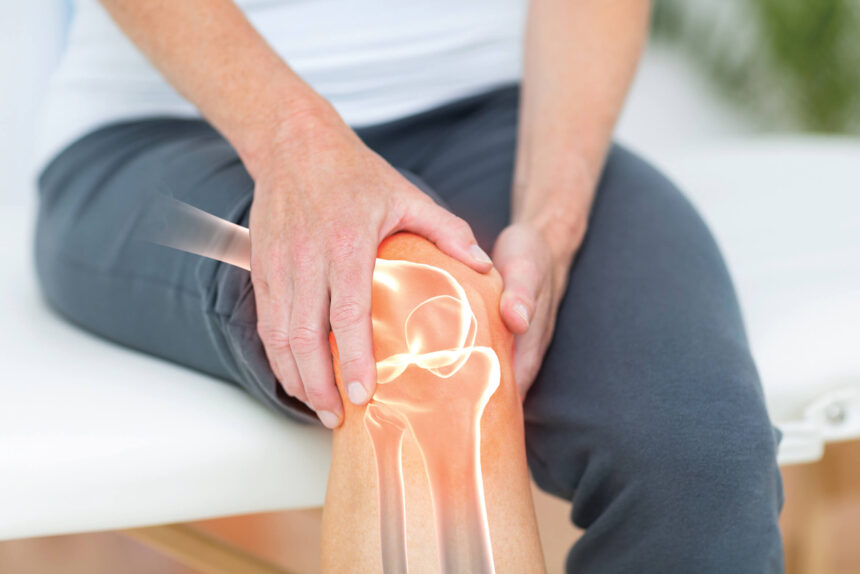Joints, the connectors between bones, are crucial for movement and overall bodily function. As we age, or due to certain conditions, these joints can become vulnerable to damage, leading to pain, inflammation, and reduced mobility. Taking proactive steps to protect and strengthen joints can significantly enhance one’s quality of life. This article provides twelve effective strategies to help achieve that goal.
1. Maintain a Healthy Weight:
Every pound of excess weight exerts about four pounds of extra pressure on the knees, a fact that becomes significant when you consider the cumulative effect on weight-bearing joints over time. By maintaining a healthy weight, one can significantly reduce the stress placed on joints, such as the knees, hips, and lower back. Achieving and maintaining a healthy weight through a balanced diet and regular exercise can go a long way in preserving joint health.
2. Prioritize Low-Impact Exercises:
Not all exercises are created equal, especially when it comes to joint health. Low-impact exercises like swimming, cycling, and walking provide the cardiovascular benefits without adding unnecessary strain on the joints. These activities promote joint flexibility and build the muscles that support them, reducing the risk of injuries and wear-and-tear.
3. Warm-Up Before Exercising:
A proper warm-up prepares the body for exercise, increasing blood flow to muscles and helping the joints move more efficiently. Warm-ups can include dynamic stretches, light aerobic activities, or even the same exercises you plan to do but at a reduced intensity. This preparatory step reduces the risk of joint injuries and helps in maximizing the benefits of the workout.
4. Stay Hydrated:
Adequate hydration plays a surprisingly significant role in joint health. Joint cartilage is about 80% water, and maintaining this composition is essential for its proper function. Staying hydrated ensures that cartilage can adequately resist compression, reducing wear and tear. Drinking water also helps in lubricating the joints, promoting smooth movement and reducing the risk of injury.
5. Incorporate Strength Training:
Strength training isn’t just for muscle-building aesthetics; it’s also pivotal for joint health. Strong muscles act as supportive structures for joints, taking off some of the load and stress that joints might otherwise bear alone. Simple weight-bearing exercises, when done correctly, can enhance joint stability and prevent potential injuries.
6. Ensure Adequate Omega-3 Intake:
Omega-3 fatty acids, found in fish like salmon and in flaxseeds, possess potent anti-inflammatory properties. Chronic inflammation can lead to joint pain and degeneration. Thus, incorporating a diet rich in omega-3s can offer protective benefits for the joints, reducing inflammation and promoting overall joint health.
7. Prioritize Good Posture:
Whether standing, sitting, or even sleeping, maintaining a good posture can significantly impact joint health. Improper alignment can place undue stress on joints, leading to wear and tear over time. Simple practices, such as being mindful of spine alignment, avoiding slouching, and using ergonomic furniture, can help in preserving the health of joints.
8. Consider Supplements for Joint Health:
Supplements like glucosamine, chondroitin, and collagen have gained popularity for their potential benefits for joint health. Glucosamine and chondroitin can help maintain the health of cartilage, while collagen provides the basic building blocks for tendons, ligaments, and cartilage. If considering supplements, it’s essential to choose quality products and consult with a healthcare professional to ensure they’re right for you.
9. Stay Flexible with Regular Stretching:
Flexibility is crucial in maintaining joint function and reducing the risk of injury. Incorporating regular stretching exercises can help keep joints and the surrounding muscles limber. Techniques such as yoga and pilates are not only beneficial for flexibility but also help in strengthening the muscles that support joints.
10. Use Protective Gear during Physical Activities:
For those engaging in physical activities that pose a risk to joints, using protective gear like knee pads, wrist guards, or elbow braces can be essential. Such gear provides additional support and can mitigate the risk of injuries or strain.
11. Limit Repetitive Movements:
Repetitive motions, especially under strain, can exacerbate wear and tear on joints. For jobs or activities that require constant repetition, it’s important to take regular breaks and consider alternatives that might distribute the strain more evenly.
12. Listen to Your Body:
Above all, it’s paramount to listen to one’s body. Recognizing the signs of joint strain, pain, or discomfort, and taking them seriously, can prevent further complications. When in doubt, or if pain persists, seeking advice from a healthcare professional is essential.
Conclusion:
Joint health is integral to our overall well-being and quality of life. With an understanding of the measures that protect and strengthen our joints, we can make informed choices that enhance mobility and reduce the risk of injuries. By incorporating these strategies, we not only invest in our joint health but also in a future where movement remains a joy, not a challenge.








